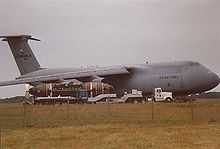Mystic-class deep-submergence rescue vehicle


Mystic class is a class of Deep-Submergence Rescue Vehicles (DSRVs), designed for rescue operations on submerged, disabled submarines of the United States Navy or foreign navies. The two submarines of the class were never used for this purpose, and were replaced by the Submarine Rescue Diving Recompression System.
Features
DSRVs are designed for quick deployment in the event of a submarine accident. DSRVs are transportable by truck, aircraft, ship, or by specially configured attack submarine. At the accident site, the DSRV works with either a "mother ship" or "mother submarine". The DSRV dives, conducts a sonar search, and attaches to the disabled submarine’s hatch. DSRVs can embark up to 24 persons for transfer to the mother vessel.
The DSRV also has an arm to clear hatches on a disabled submarine and a combined gripper and cable cutter. The gripper is able to lift 1,000 pounds (450 kg).
Background

The Deep Submergence System Project was established in June 1965 in the aftermath of the loss of USS Thresher in 1963.
At the time, submarine operating depths greatly exceeded the capabilities of rescue vessels. Lockheed Missiles and Space Company was contracted to produce a deep diving rescue submarine, the first of which was launched in 1970.[1] While it has been alleged that the stated goal of the DSRV project was unrealistic, and that it was a front for research on undersea espionage, including cable tapping,[1] the DSRVs have a demonstrated rescue capability, and have conducted numerous practice rescue missions.
DSRV-1 was launched in San Diego, California, on 24 January 1970. Testing culminated in an operational evaluation that saw a complete, simulated submarine rescue mission. DSRV-1 was named Mystic during Fleet Acceptance Ceremonies in 1977.
The second, and final, vessel in the class, DSRV-2, was subsequently launched and named Avalon.
DSRVs in fiction
The DSRV was portrayed in the 1978 movie Gray Lady Down, where it was used to rescue the crew of a sunken submarine.
Both DSRVs were featured in Tom Clancy's book, The Hunt for Red October, as part of a scheme to seize a defecting Soviet submarine, and one featured in the film adaptation.
The DSRV Mystic was featured in the pilot episode of the 2005 NBC television series Surface. One of the main characters takes the submarine down to the ocean floor to study a newly discovered life-form.
It also plays a role as a rescue vehicle for Danish submariners in the game Sub Command under the mission "Save The Danes".
The DSRV was also the main vehicle in the Book "The Abyss" (1989) by Orson Scott Card and 1989 movie "The Abyss" Directed by James Cameron. With Ed Harris, Mary Elizabeth Mastrantonio, Michael Biehn, Leo Burmester.
General characteristics
| Builder: | Lockheed Missiles and Space Co., Sunnyvale, California |
| Power Plant: | Electric motors, silver/zinc batteries, one shaft, 15 shaft horsepower (11 kW), four thrusters, 7.5 horsepower (6 kW). |
| Length: | 49 ft (15 m) |
| Beam: | 8 ft (2.4 m) |
| Displacement: | 38 tons (39 metric tons) |
| Speed | 4 knots (7 km/h) |
| Maximum depth: | 5,000 ft (1500 m) |
| Sonar: | Search and navigation |
| Ships: | Mystic (DSRV 1) |
| Avalon (DSRV 2) | |
| Crew: | Two pilots, two rescue personnel and the capacity for 24 passengers |
List of vessels
See also
References
- ↑ 1.0 1.1 Sontag, S.; Drew, C.; Drew, A. L. (1998). Blind Man's Bluff: The Untold Story of American Submarine Espionage. Harper. ISBN 0-06-103004-X.